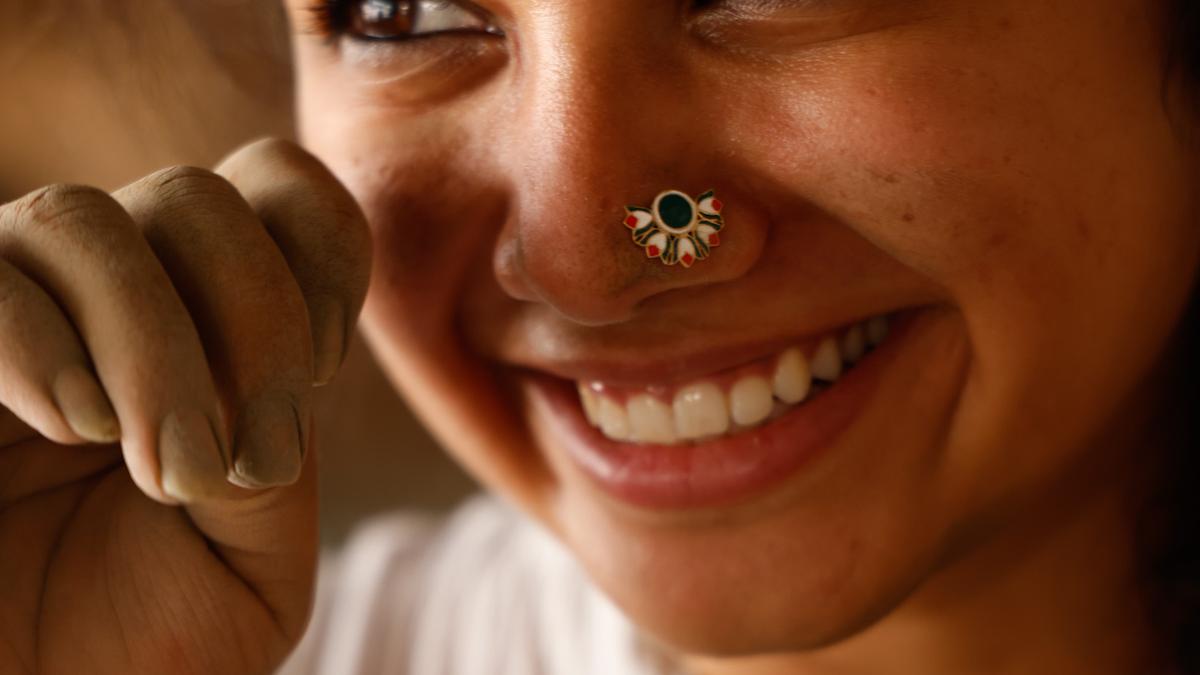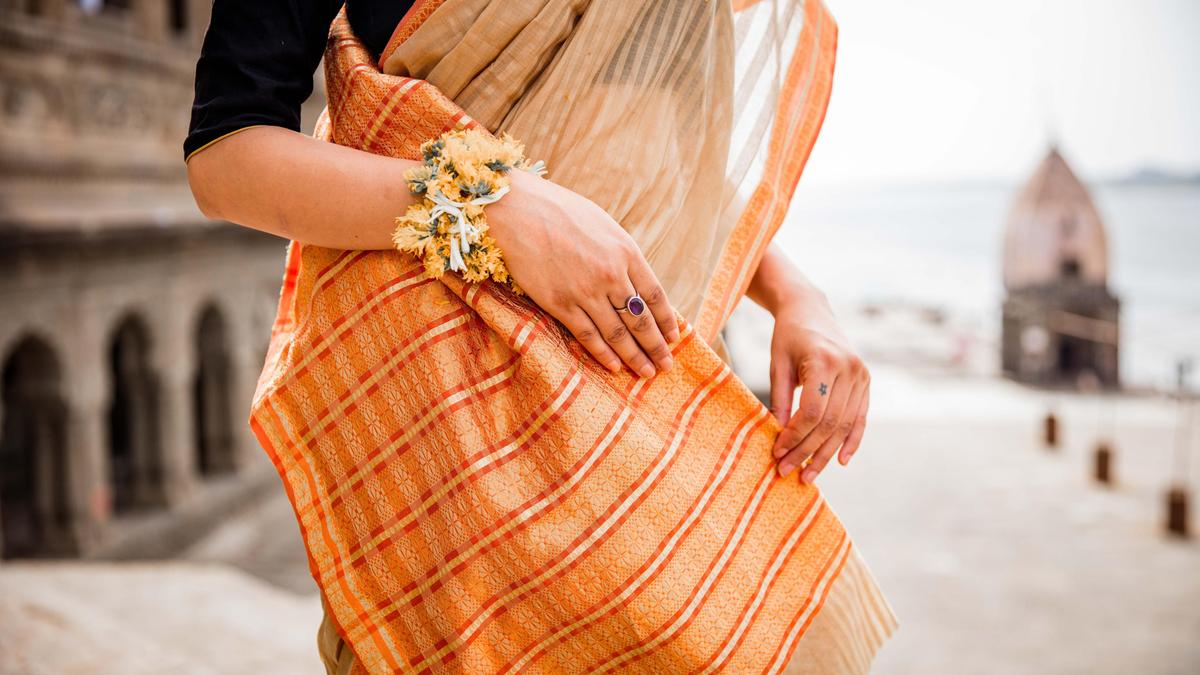A nine-foot tall, 15-foot wide hand-drawn kalamkari wall panel, dyed in natural colours, dresses up Mamata Reddy’s workspace in Hyderabad. The wall panel features a rare combination of Shiva and Hanuman. Large images of the two deities are flanked by 16 four-inch horizontal panels bearing smaller pictorial narration of stories of Shiva and Hanuman, interspersed with text. Mamata, founder of the three-decade old Kalam Creations that supports 45 artisan families in Tirupati, reveals that the wall panel is a labour of love of 14 months.
This panel is proof that kalamkari artisans have kept the tradition of narrating stories on cloth, alive. Kalamkari, whose origins can be traced to 3000 years, historically witnessed artisans using the ‘kalam’ or pen to narrate stories from the Ramayana, Mahabharata and Bhagavatham.

Shiva-Hanuman themed kalamkari wall panel | Photo Credit: Special Arrangement
Saris, garments, fabric and home furnishings may have become the mainstay of kalamkari for saleability but that has not dented storytelling, at least for a niche segment. “Storytelling continues to thrive, only the format has changed,” says Mamata. Her artisans try to narrate stories on saris, kurtas, fabrics, and wall panels.
The colour palette has expanded, as her artisans experiment with natural dyes to arrive at hues of pinks, reds, browns, blues, greens, and mustards. “When we began 30 years ago, most kalamkari designs were dyed in five colours — red, black, blue, green, and indigo. There was monotony. We did single and double colours to offer something new,” Mamata recalls.

The muted green that forms the base of the Shiva-Hanuman wall panel is a product of experimentation. Mamata also points out how work is segregated. The drawings have all been done by a single artist, who worked on the fabric for three hours a day, over several months. “He cannot do more than that since it involves enormous focus and can strain the eye.”
Different artisans take charge of different dyes. “Some are good with shades of mustard, others with pinks, greens or blues. An artist specialises in a particular colour family to maintain uniformity,” says Mamata.
Innovate to stay relevant
Mamata shows a Kanchi silk sari with a muted pink base, with gloriously hand-painted floral forms, bordered by a Ramayana story panel, all in kalamkari. “Around 80% of our work is with figures — either inspired by devotional texts or forms of birds, while 20% is florals. For clients who do not want to wear any figures on their garments, we do floral patterns,” she explains.
Some saris have hand-written kalamkari text with pictorial stories. There are experiments that combine techniques — think of ikat and kalamkari, or kantha embroidery border and kalamkari body and pallu. Mamata terms it “a jugalbandi”.

Mamata Reddy with Dr Nagalakshmi Nyayapathi. | Photo Credit: Special Arrangement
“Earlier, artists would narrate stories on half, one, or two metres of cloth. The sizes were standard. Today the stories can be on cushion covers, table runners or wall panels of specific dimensions,” says Mamata. She mentions how a client, Mohini Nallapaneni, wanted an Annapurna devi story wall panel for her dining area, to symbolise the value of sharing and nourishment. When such a request comes in, Mamata reads the relevant story and discusses with the client and her artisans to finalise the imagery.
“The market is small but very much there. We cannot mass produce since the artisans need adequate time to work on such pieces; the labour-intensive process is why our products do not come cheap,” adds Mamata. Kalam Creations products are priced between ₹3000 and 3 lakhs.

Innovate to stay relevant
Kalamkari wall panels dating back to the 17th, 18th and 19th centuries, which reflect how the artisans then interpreted narratives from the epics as well as social themes, are now part of national and international museum archives.
In the contemporary realm, Mamata explains how innovation is essential to ensure that the craft finds takers.
In 2010, when Hyderabad-based designer Sashikant Naidu worked on a collection of kalamkari saris and ensembles, he challenged the norm and asked if Mamata and her team could develop a range of muted colours using natural dyes. The intricate figures and floral forms were filled with fine lines of colours. “We thought it would be impossible, but it opened a new chapter for our artisans,” recalls Mamata.
Innovation continued when she later collaborated with textile designer Gaurang Shah. In 2017, the designer’s collection titled Chitravali included 40 saris and ensembles with hand-drawn imagery inspired by paintings in the Ajanta and Ellora caves, in kalamkari style.
Further experiments are in progress. While some are for special showcases, others are for Mamata’s clientele. “My only condition is that kalamkari cannot be rushed. A sari might take 30 to 45 days or a wall panel might take a few months depending on the size and intricacies. When we deliver something, we want it to be wow-inducing. For that, the artists need time,” says Mamata.

 5 hours ago
1
5 hours ago
1






















 English (US) ·
English (US) ·